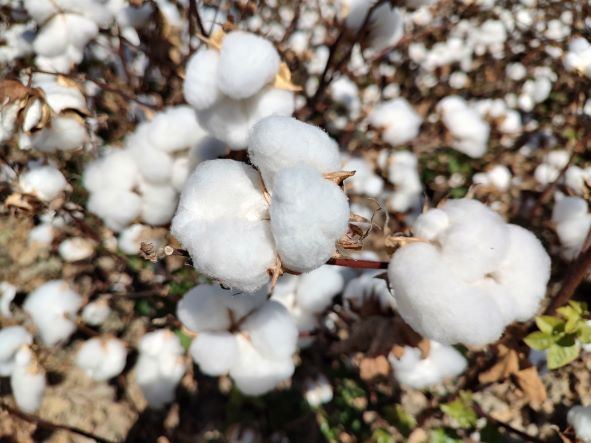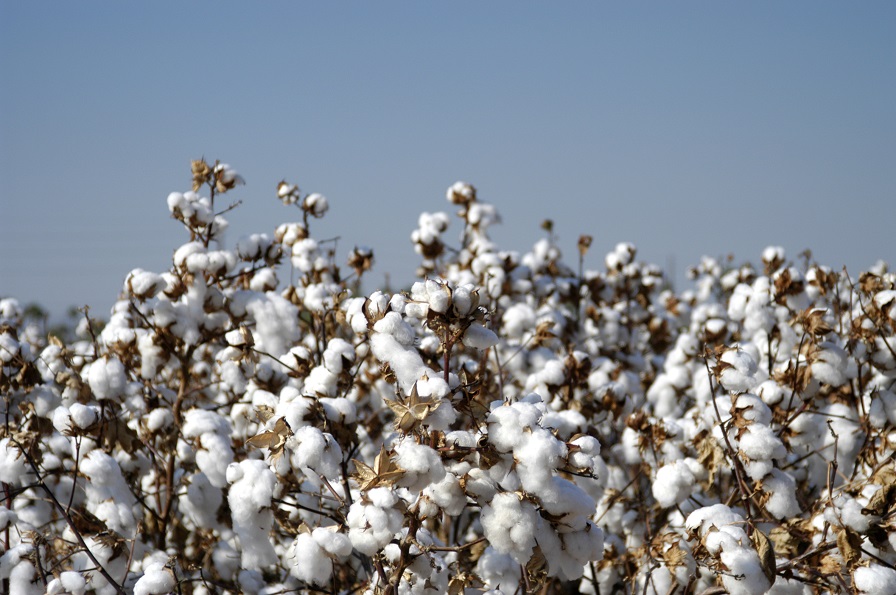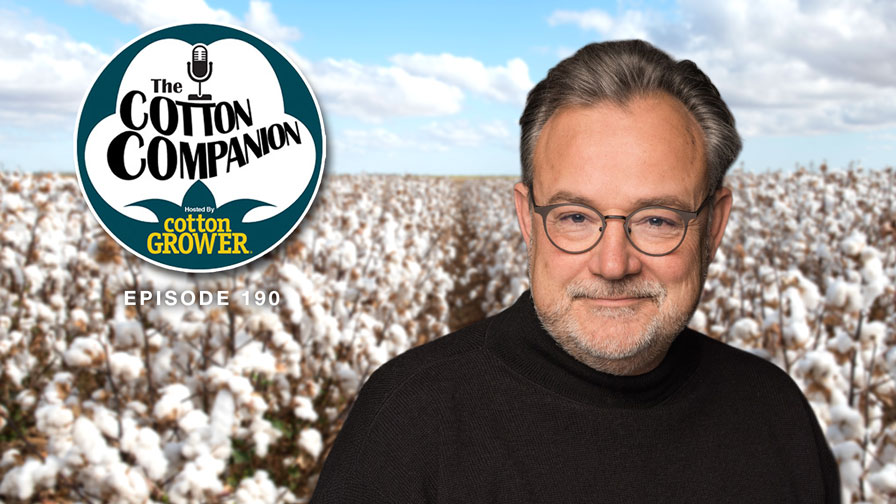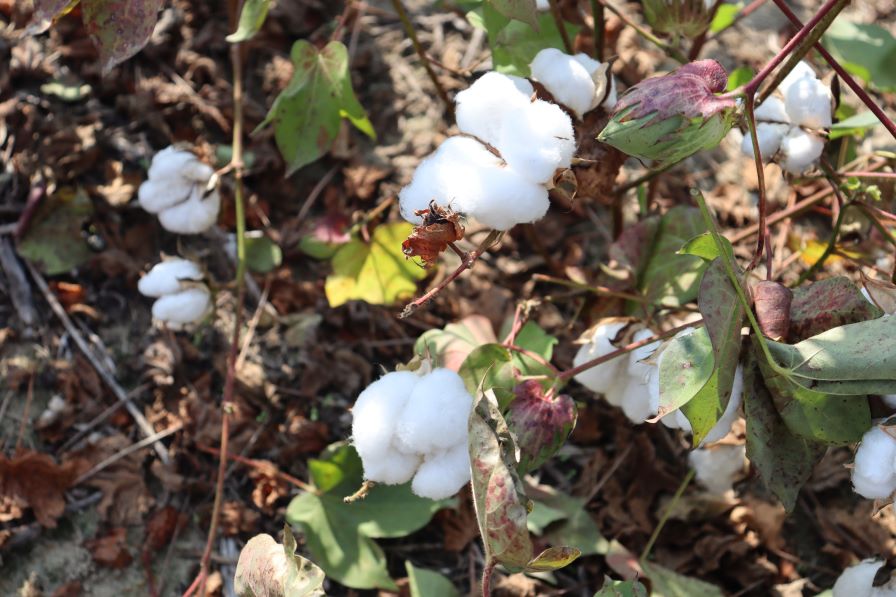Dixon Farms Wins 2010 Cotton Marketer of the Year Award

“This year’s Award winner is a family operation — two brothers and a sister. We’ve never had that before. We’ve had a father-son, and a couple of brother-brother winners,” said Dr. O. A. Cleveland. “So it’s a pleasure for the Award to go to Dixon Farms — a very integrated operation. To me, it’s more like a California operation because of the fruits, nuts and cotton.”
In addition to growing 2,500 acres of cotton, the Dixons also grow peanuts and corn. They also have pecans and watermelons. Up until 2004, they raised tobacco. They own and operate Dixon Gin Co., and a peanut buying point. And they also own Dixon Farm Supply that sells a wide range of agricultural products.
“In the ginning operation, they handle the marketing for many of their customers, as well as their own marketing,” Cleveland continued. “They did an excellent job of growing cotton this year, averaging over 2 bales per acre, and they were able to take advantage of the nice increases in prices we’ve had.”
Holly Walker, Senior Sales Representative for Bayer Crop Science in Moultrie, GA, nominated the Dixons for their outstanding work in all phases of cotton production.
“They’re a close-knit family and they really stay on top of marketing. Every one of them is involved,” said Walker. “I know only the children were in Atlanta, but with their mama, Ronda, and their daddy, Steve, they run an incredible business. All of them are involved in what’s going on day-to-day.
“And that’s also true for their customers. They are there from planting to harvest. They know where everybody’s fields are. Their recommendations on everything — everything — are just incredible.”
Generation Three
The winners, Jaclyn Dixon Ford and her brothers, Quentin Dixon and Carl Mathis Dixon, II, make up the third generation of growers in their family. But as Walker says, it’s a family affair, very much including the second generation.
“My parents are still very active and involved in making our decisions,” says Jaclyn.
Quentin handles all of the on-farm operations, while Carl Mathis oversees the gin operations, the farm supply business and the peanut buying point. Jaclyn manages the gin office, and Rhonda manages the peanut buying point office.
“But when it comes to decision making, we’re all involved, as far as when we sell our crops,” Jaclyn said. “We’ll get together and talk. Before we set a price for our farm, we discuss options, the crop condition and yield potential. We make the decisions together.”
After graduating from the University of Georgia, she began working as a lobbyist for the Georgia Farm Bureau. But the gin purchase gave her the opportunity to return home, and that’s when she became interested in cotton marketing.
“When my Dad bought the gin, he asked me if I would run it,” she explained. “It was a good opportunity and a chance to move back home.”
But it was not the auspicious start she’d hoped for, compared to the record highs the cotton market is putting in these days.
“The first year I was in marketing at the gin, the LDP (Loan Deficiency Payment) was worth more than the market,” Jaclyn said. “The LDP was 30 cents and the market was trading in the high 20s. I think the net was about 58 cents.”
“I learned through trial and error — mostly error.”
Whatever it took, she learned well. In the summer of ’10, the family was 60% booked at an average of 77 cents per pound. After selling the balance for as high as $1.39, the average jumped to 98 cents.
“We’re very conservative — sometimes maybe more than we should be,” Jaclyn continued. “We want to make sure we can deliver on our promises, and we never want to be in a position where we have to pay the market difference.”
In 2010, Jaclyn worked with eight different cotton merchants. “I shopped the basis and try to get the best I can for our farm, as well for our customers,’” she said. After locking in a basis, the price can be called at any time.
A major concern, and a large part of the family’s conservative marketing approach, is based on the weather. Jaclyn said many growers overestimated yields in 2009, due to drought, and found themselves in over-sold situations.
“North of us was very dry, and yields were really hurt. A lot of people contracted based on 750 pounds per acre, and they didn’t make it. They had to pay market differences,” she explained. “Some of them had to pay as much as $250 per bale market difference. That’s just terrible for them.”
For example, if a grower sells cotton at 70 cents per pound, based on 750-pound yields, and made only 500, he owes somebody, somewhere the cash equivalent of 250 pounds worth of cotton at whatever the price is at that time. And that could be $1, or much more. Using that $1 per pound cash price, a 250-pound loss would cost a grower $250 per acre. Subtract that from the 500 pounds he made at 70 cents — a gross of $350 per acre — and a grower was looking straight at a gross of only $100 per acre. Add in the cost of production, and you get the vivid picture of what potential losses could be.
Another factor in the Dixons’ conservative approach in factoring in yield potential came with the exit from the market of Deltapine’s DP 555 BG/RR, which had a market share of nearly 84% in Georgia in 2007. Even as it left the market in 2009, 555 commanded a 24.7% share — the highest percentage in Georgia in 2010 — as growers scrambled to buy the remaining supply.
This year, in addition to all the 555 they could get their hands on, the family planted several different varieties, looking for a replacement for the consistent yields 555 had accounted for over the years. The new varieties included Stoneville’s ST 4288B2RF, ST 5458 B2RF FiberMax 1740 B2RF and Deltapine’s DP 1048 B2RF, DP 0935 B2RF and DP 0949 B2RF.
“We were happy with a lot of the new varieties,” said Carl Mathis. “We’re happy with them, and in certain conditions, they did better than 555.”
Jaclyn added that their yields in ’09 were “were very good,” because they got timely rain that many other spots in Georgia did not. In addition, the Dixons are 60% irrigated.
“We were in an area that was very fortunate to get some rain. We had a strip right through here that did get some rain,” she said. “It was rain that a lot of people didn’t get.”
Onward and Upward
Jaclyn believes the next three years look very promising for cotton, and most experts agree, what with the cotton stocks-to-use ratio sitting at a record low at the moment of less than 10% in the U.S.
“Supply is so tight that hopefully we’ll be able to take advantage of these high prices, at least for a couple of years,” she said. “All of our farmers are optimistic, and we’re about 30% priced for this year’s crop. We’re contracting cotton for 2012 and we’re even looking at 2013. I’m just thinking it’s going to be a good year for prices, but you never know what the weather will do.”









